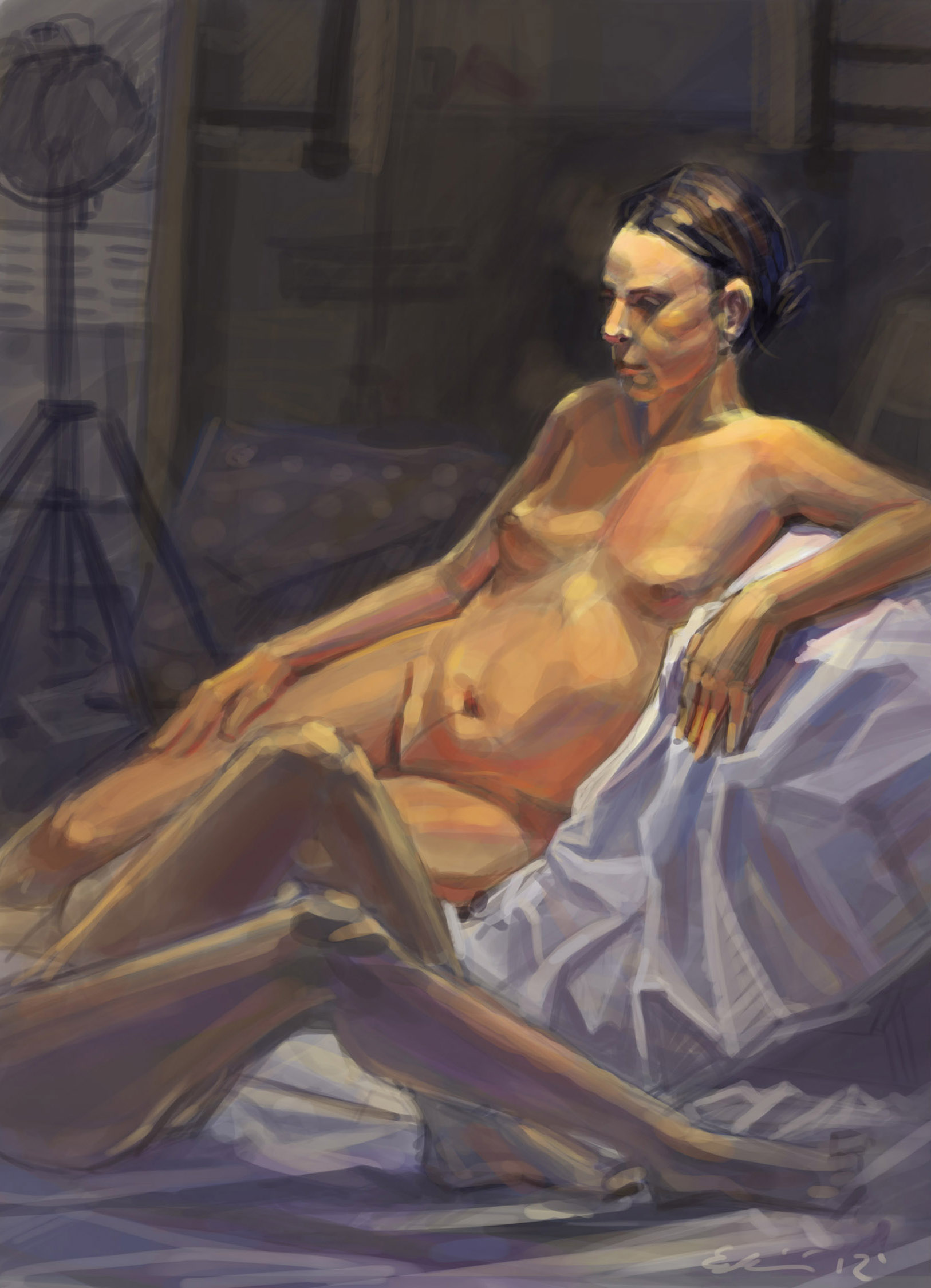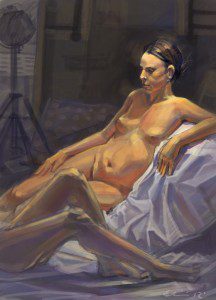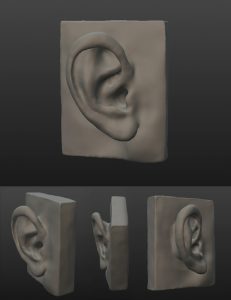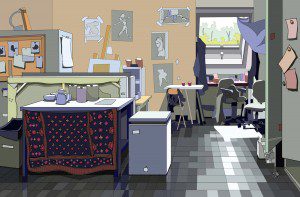The best places to start learning about our Portfolio Categories are the Sample Portfolio page and the Admissions Page.
In the Digital Media category, the faculty want to see applicants demonstrate “competency in use of digital media. Examples might include raster, vector, 2D or 3D media. Subject matter for submissions in this category may overlap with all other categories.” A minimum of 2 digital media pieces are requested in the admissions portfolio.
The digital media examples in the Sample Portfolio represent accurate and realistic depictions of observed subjects or objects. Applicants may have sketched traditionally with direct observation of their subject or object, then scanned the sketch into a digital platform, and then applied color in a software program like Photoshop. They also may have digitally sketched what they directly observed using a digital tablet and pen, like a Wacom Tablet, Cintiq Companion or iPad Pro. They further may have digitally sculpted what they directly observed using software like Sculptris, ZBrush, or Cinema 4D.
Each example in the Sample Portfolio shows an accomplished use of color, cast shadow, perspective, reflection, or sense of form in space. Even the posters on the wall in the Vector illustration have cast shadows. Examples not shown might also include animation or web interactivity.
For Digital Media in particular, it is critical to create art while directly observing the subject and to avoid creating art on top of a photograph. Admissions faculty are extra skeptical of art created using applications like Procreate as the applications allow drawing on top of photographs. This not only can skew perspective and proportion, but it does not show an artist’s ability to draw what they see only that they can copy lines and shadows in the photograph. We strongly recommend avoiding this style of art as it will not lead to enhanced drawing ability and is strongly disliked by the Admissions Committee.
As with all portfolio categories, please also avoid medical, anatomical, physiological, or similar subject matter. Our faculty create, teach, and most importantly critique art of this subject matter for a living. Naturally, they are more critical of medical illustration than art of any other subject.
If you have additional questions, don’t hesitate to contact us – [email protected] or Request Information.
Best,
Ebony,
Thank you for your help with this post Jeni!
More posts in the Admissions Blog.





